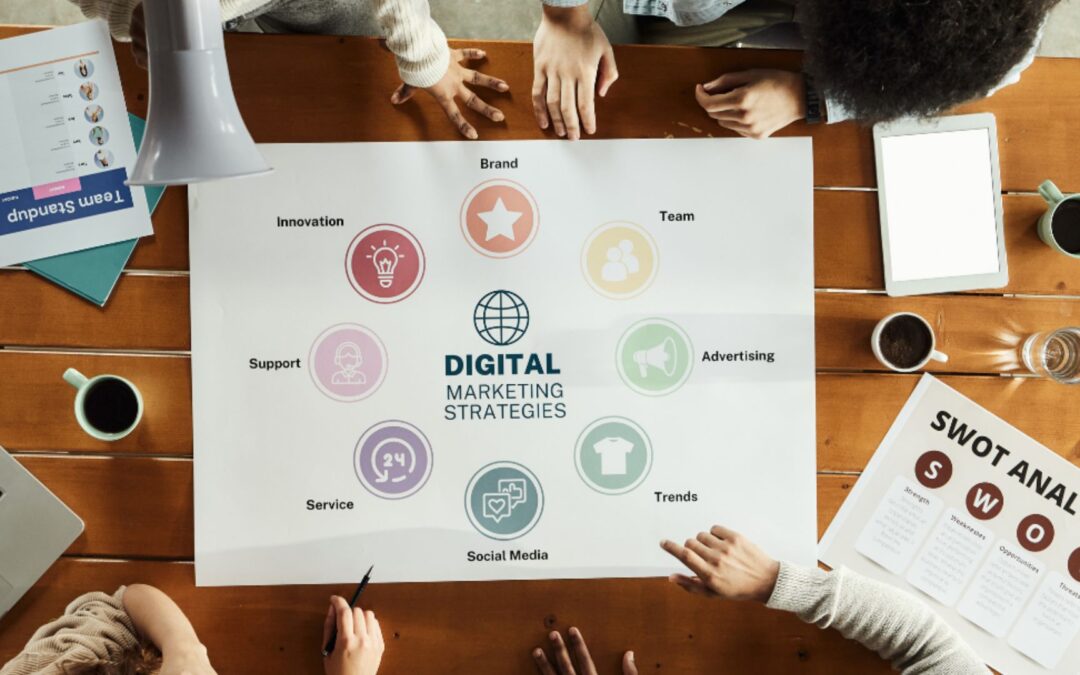Welcome to Zen9 Marketing’s comprehensive guide on the role of influencer marketing in modern business. In today’s digital landscape, traditional advertising methods are increasingly being supplemented or even replaced by more dynamic and engaging strategies. Among these, influencer marketing stands out as a powerful tool for boosting brand awareness, credibility, and engagement. In this blog, we will explore how influencer marketing can benefit your business, discuss strategies for finding the right influencers, and provide methods for measuring the success of your influencer campaigns.
The Power of Influencer Marketing
Influencer marketing leverages individuals who have a significant following on social media platforms to promote products or services. These influencers can sway their audience’s purchasing decisions due to their perceived authority, knowledge, or relationship with their followers.
Key Benefits of Influencer Marketing:
- Increased Brand Awareness: Influencers have a dedicated audience that trusts their recommendations. Partnering with influencers allows your brand to reach a wider audience and increase visibility.
- Enhanced Credibility and Trust: Consumers are more likely to trust recommendations from individuals they follow and admire. Influencers lend credibility to your brand, making it easier to build trust with potential customers.
- Improved Engagement: Influencers create engaging content that resonates with their audience. Collaborating with them can boost engagement rates for your brand’s content, leading to higher likes, comments, and shares.
- Targeted Marketing: Influencers have a specific demographic of followers. By choosing the right influencers, you can target your marketing efforts more effectively, reaching the audience most likely to be interested in your products or services.
- Cost-Effective Campaigns: Compared to traditional advertising, influencer marketing can be more cost-effective. Micro-influencers, in particular, offer high engagement rates at a lower cost than larger influencers or traditional media ads.
Finding the Right Influencers
The success of your influencer marketing campaign largely depends on finding the right influencers to partner with. Here are some strategies to help you identify and choose influencers who align with your brand and campaign goals.
-
Define Your Goals and Audience:
Before you start searching for influencers, it’s crucial to define your campaign goals and understand your target audience. Are you looking to increase brand awareness, drive sales, or boost engagement? Knowing your objectives will help you choose influencers who can effectively meet those goals.
Example: A skincare brand aiming to reach young women aged 18-25 might look for beauty influencers who specialize in skincare routines and have a strong following in that demographic.
-
Research Potential Influencers:
Use social media platforms, influencer marketing platforms, and tools like BuzzSumo, HypeAuditor, and Social Blade to find influencers in your industry. Look for influencers who create high-quality content and have an engaged following.
Key Factors to Consider:
- Relevance: Ensure the influencer’s content and audience align with your brand and campaign goals.
- Reach: Consider the influencer’s follower count, but don’t overlook micro-influencers who may have smaller but highly engaged audiences.
- Engagement Rate: Analyze the influencer’s engagement rate (likes, comments, shares) to gauge how active and responsive their audience is.
- Authenticity: Choose influencers who genuinely resonate with their followers and have a history of authentic engagement.
Example: A fitness brand might use HypeAuditor to find influencers who focus on fitness and wellness, checking their engagement rates and follower demographics to ensure alignment with the brand’s target audience.
-
Evaluate Influencer Performance:
Once you’ve identified potential influencers, evaluate their past performance. Look at their previous collaborations, the type of content they produce, and how well those campaigns performed.
Example: A fashion retailer might review an influencer’s past sponsored posts to see how their audience responded. Did the posts generate significant engagement and positive feedback? Did the influencer’s followers seem interested in the products?
-
Reach Out and Build Relationships:
After identifying the right influencers, reach out to them with a personalized message. Explain why you think they are a good fit for your brand and outline the potential collaboration. Building a genuine relationship with influencers can lead to more successful and long-term partnerships.
Example: A tech company might send a personalized email to a tech influencer, highlighting the influencer’s recent content and explaining how the company’s new gadget aligns with their interests and audience.
Measuring the Success of Influencer Campaigns
To determine the effectiveness of your influencer marketing campaigns, it’s essential to track and measure relevant metrics. Here are some key performance indicators (KPIs) to consider:
-
Reach and Impressions:
Measure how many people saw your content. Reach refers to the number of unique users who viewed your content, while impressions indicate the total number of times your content was displayed.
Example: A food brand collaborating with a popular food blogger might track the reach and impressions of a sponsored Instagram post featuring their product.
-
Engagement:
Analyze engagement metrics such as likes, comments, shares, and saves. High engagement indicates that the content resonated with the audience and encouraged interaction.
Example: A travel agency working with a travel influencer might measure the engagement on a YouTube travel vlog that showcases a new vacation package.
-
Website Traffic:
Track the amount of traffic driven to your website from the influencer’s content. Use UTM parameters and Google Analytics to monitor referral traffic and identify which influencers are driving the most visitors.
Example: An online boutique might use UTM codes to track traffic from a fashion influencer’s Instagram story swipe-up link.
-
Conversions and Sales:
Measure the number of conversions or sales generated from the influencer campaign. This can include purchases, sign-ups, or other desired actions. Providing influencers with unique discount codes or affiliate links can help track conversions.
Example: A health supplement brand might give a fitness influencer a unique discount code to share with their followers, then track the number of sales using that code.
-
Brand Mentions and Sentiment:
Monitor brand mentions and sentiment to gauge the overall impact of the campaign on brand perception. Tools like Brandwatch and Mention can help track mentions and analyze the sentiment of the conversations.
Example: A new tech startup might use Brandwatch to monitor social media mentions and see how people are talking about their product after a tech influencer’s review.
-
Return on Investment (ROI):
Calculate the ROI of your influencer marketing campaigns by comparing the cost of the campaign to the revenue generated. This will help determine the overall effectiveness and profitability of your efforts.
Example: A beauty brand might calculate the ROI of an influencer campaign by comparing the total cost (influencer fees, product costs, etc.) to the revenue generated from sales attributed to the campaign.
Case Studies of Successful Influencer Campaigns
-
Daniel Wellington:
Daniel Wellington, a Swedish watch brand, achieved massive success through influencer marketing. By partnering with a diverse group of influencers, from micro-influencers to celebrities, the brand reached a wide audience and built a strong social media presence. Influencers shared discount codes and promoted the brand’s sleek, minimalist watches, driving significant traffic and sales.
-
Glossier:
Glossier, a beauty brand, leveraged influencer marketing to build a community around its products. By working with beauty influencers and encouraging user-generated content, Glossier created a sense of authenticity and trust. The brand’s customers became its biggest advocates, sharing their experiences on social media and driving organic growth.
-
Airbnb:
Airbnb used influencer marketing to showcase unique travel experiences. By partnering with travel influencers and bloggers, Airbnb highlighted different properties and destinations through engaging, authentic content. This strategy not only increased bookings but also enhanced Airbnb’s brand image as a provider of one-of-a-kind travel experiences.
Conclusion
Influencer marketing offers modern businesses a powerful way to boost brand awareness, credibility, and engagement. By carefully selecting the right influencers, creating compelling content, and measuring campaign success through key performance indicators, businesses can achieve remarkable results.
At Zen9 Marketing, we specialize in developing and executing effective influencer marketing strategies tailored to your business goals. Our expertise ensures that your campaigns are not only impactful but also aligned with your brand’s values and objectives. Contact us today to start leveraging the power of influencer marketing and take your business to new heights. Together, we can create authentic connections and drive meaningful results in the ever-evolving digital landscape.
FAQ: Influencer Marketing for Modern Businesses
1. What is influencer marketing, and why is it important for businesses today?
Influencer marketing uses individuals with a loyal social media following to promote your products or services. Why is it a game-changer? Studies show 61% of consumers trust influencer recommendations, and influencer campaigns can deliver an ROI of up to 11x compared to traditional ads. It’s all about trust and authentic connections.
2. How do I choose the right influencer for my business?
Start with relevance. Ensure their niche aligns with your product. Check engagement rates—ideally above 2%—and review audience demographics. For instance, if you sell vegan snacks, team up with plant-based food bloggers who regularly engage with their audience about sustainable living.
3. Are micro-influencers better than mega-influencers?
Yes, in some cases. Micro-influencers (1,000–100,000 followers) often have a highly engaged niche audience. A survey by Markerly found that micro-influencers drive 60% more engagement than their larger counterparts. For smaller budgets, they’re a win-win.
4. How can small businesses afford influencer marketing?
It’s not just for big brands! Many influencers accept free products or offer affordable rates. Platforms like Upfluence connect businesses with influencers within their budget. In fact, some micro-influencers charge as little as $100 per post.
5. What types of content work best in influencer marketing?
Authentic, relatable content wins. Short-form videos (like Instagram Reels) see 22% higher engagement than static posts. Story formats with “behind-the-scenes” vibes or tutorials tend to build trust and spark action.
6. How do you measure the success of an influencer campaign?
Track metrics like:
- Engagement rate: Likes, comments, shares (benchmark: 2–5%).
- Website traffic: Use UTM links in influencer posts.
- Sales conversions: Discount codes or affiliate links work wonders! Example: A 2023 study showed influencer campaigns can increase direct sales by 20%.
7. What’s the biggest mistake businesses make in influencer marketing?
Focusing solely on follower count. An influencer with a million followers isn’t worth it if their audience isn’t engaged. Always analyze their comments section to spot genuine interactions.
8. How can I ensure my campaign feels authentic?
Let the influencer’s voice shine. Instead of providing a strict script, outline goals and let them create. Consumers can spot overly promotional content a mile away. For example, brands like Glossier succeed by empowering influencers to share their real experiences.
9. Can influencer marketing work for B2B companies?
Absolutely! LinkedIn influencers, industry experts, and niche blogs are great for B2B. In 2023, 91% of B2B marketers used content creators to drive leads and educate audiences, proving that this isn’t just a B2C game.
10. What trends are shaping influencer marketing in 2024?
Short-form video platforms (TikTok, YouTube Shorts) are dominating, with 75% of brands investing in them. Also, AI-driven influencer matching is becoming mainstream, helping businesses find the perfect fit quickly. Lastly, expect a rise in nano-influencers for hyper-local marketing.





